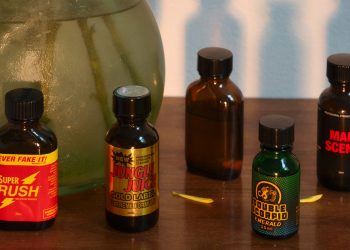Introduction
Growing your hair out can be a time-consuming process. It’s no surprise, then, that so many people turn to hair growth treatments for help. Whether you’re looking for shorter-term solutions or longer-term results, there are a wide range of treatments available to help you get the hair look you want.
But how do you know which treatments will work best for your particular situation? It may be tempting to just jump into the first product or treatment regimen you find, but it’s important to do your research first. In this ultimate guide, we’ll cover all the essential information you need to know before beginning any kind of hair growth treatments. We’ll explain how these treatments affect your scalp and hair follicles, teach you about the different types of products and procedures available, and provide lots of tips and tricks on how to maximize your results.
What Are the Benefits of Hair Growth Treatments?
Are you looking for a long-term remedy to get the most out of your hair care routine? If so, hair growth treatments are an excellent option. Hair growth treatments are designed to protect and stimulate your hair follicles, which in turn encourages the growth of healthy, strong hair.
Not only do these treatments enhance the appearance of your hair, they offer countless other benefits too. For starters, they can help to reactivate dormant or inactive hair follicles, allowing them to produce healthy new hairs. Additionally, these treatments often contain nutrients and vitamins that nourish the scalp and provide essential nourishment for stronger strands.
On top of all this, hair growth treatments can help boost your self-esteem and give you a newfound confidence. After all, who doesn’t want thick, luscious locks? With a regular regimen of these treatments, you’ll feel more attractive and ready to take on the world!
What Ingredients Should You Look for in a Hair Growth Treatment?
When it comes to hair growth treatments, there are certain ingredients that have been proven to be effective. Biotin, zinc, and iron are all key players in helping to boost hair growth. Biotin is an essential nutrient that helps break down proteins and fatty acids in the body which promote healthy hair growth. Zinc works to repair damage to hair follicles, while iron helps support overall scalp health.
Herbs such as saw palmetto, horsetail, and even rosemary have also been found to be beneficial for encouraging healthy hair growth. Saw palmetto and horsetail are packed with antioxidants which help maintain scalp health, while rosemary helps stimulate circulation in the scalp area.
For those suffering from serious hair loss, topical medications such as minoxidil may be recommended by a doctor. Minoxidil is a prescription medication that helps promote new hair growth by increasing blood flow in the scalp area and stimulating the follicles. It’s important to note however that minoxidil should only be used under the guidance of a qualified medical professional.
How to Choose the Right Hair Growth Treatment for Your Hair Type
No two heads of hair are the same, so if you want maximum results, you need to choose the right treatment for your hair type. After all, using a product that isn’t formulated for your needs won’t do you any favors.
Consider your hair’s texture and shape
The first step is to identify your hair’s texture—fine or coarse—and its shape—straight or curly. Depending on those factors, you’ll know whether you need a product that offers more moisture or one that adds protein to your strands.
When it comes to fine hair, products that provide more moisture are typically what will give you the best outcome. For thicker or coarser texture, protein-rich products tend to work best because they help fortify and strengthen the strands.
Curly hair has its own unique needs, too, which require products that offer hydration and hold simultaneously. Knowing which type of product works best for your specific curl pattern will go a long way in helping you reach those #hairgoals.
How do Hair Growth Treatments Work?
Hair growth treatments like Rogaine work by increasing hair growth and reducing hair loss over time—so if it’s been falling out more than usual lately, these treatments can help slow it down significantly. These treatments also reduce scalp irritation by providing nourishment for the scalp and follicles with natural ingredients like biotin and saw palmetto extract. This helps make thinning strands look thicker so they appear fuller with extra volume and shine.
Do Hair Growth Treatments Really Work?
Now that you know what kind of hair growth treatments are out there, it’s time to ask the important question: do they really work? The answer is yes—but it depends on the individual situation.
Some of the more commonly used treatments are Minoxidil and Finasteride. Minoxidil can help early hair loss and regrow some hair, but its effectiveness is partly dependent on how advanced your hair loss is. Finasteride is very effective and slows or stops hair loss in nearly 90% of men who take it.
Another option to consider is Laser Hair Therapy, which uses medical-grade lasers to deliver safe, low level laser light to the scalp. By stimulating blood flow to the hair follicles and increasing cellular metabolism around them, it helps promote new healthy hair growth while slowing or reversing existing hair loss.
So while there’s no one-size-fits-all answer when it comes to hair growth treatments, thankfully there are a range of options available—from taking medication to using laser technology—that can help maximize results depending on your own specific needs and preferences.
How Often Should You Use a Hair Growth Treatment?
If you’re looking to make the most out of a hair growth treatment, it’s important to know how often you should be using it. Most people should apply the product to the scalp skin once daily for women and twice daily for men.
For example, with Minoxidil, it should be applied directly to the scalp as directed, usually once or twice a day. Keep in mind that after applying it, you may need to wait for around four hours for your scalp to absorb the product before washing or letting your hair get wet.
While results can vary from person to person, keep in mind that it may take four months to a year before you start noticing any noticeable changes with hair loss treatments. For best results, you’ll want to be patient and consistent with application!
FAQs on Hair Growth Treatments
You’ve now learned a lot about the amazing hair growth treatments that are available, but maybe you still have some questions. Here are some of the most common ones we hear, with answers that should help clear up any confusion.
Is minoxidil a good treatment for my hair loss?
Minoxidil is a topical solution and works by prolonging the growth phase of the hair cycle and allowing for more hairs to grow in each cycle. It is effective in treating male and female pattern baldness, however, results will vary from person to person depending on age, sex and heredity. As heredity is responsible for 95% of all cases of alopecia, it’s worth considering that regardless of what treatment you use; treating hair loss or hair thinning can be a challenge. That doesn’t mean it’s impossible—just that it may take time to find what works best for you.
Can I prevent male or female pattern baldness?
While there is no guaranteed way to prevent male or female pattern baldness (also known as Androgenic Alopecia), there are certain steps that can be taken to reduce your chances of experiencing excessive hair loss: reducing stress levels, eating a balanced diet rich in nutrients and avoiding heated styling tools on your scalp as much as possible.
Conclusion
In short, if you’re looking for longer, fuller, healthier hair, then a strategic combination of treatments is a great path towards achieving your goals.
As you’ve seen, the route to achieving maximum hair growth results is about finding the right combination of hair growth treatments for you. It’s a journey, and it’s important to be patient and persistent along the way. Regular trims and avoiding products that damage the hair are also important steps.
We hope this guide has inspired you to take the first steps towards achieving your hair growth goals, and left you feeling confident in your ability to choose the right treatments for you. With a little time, effort and care, you can achieve the hair of your dreams.





